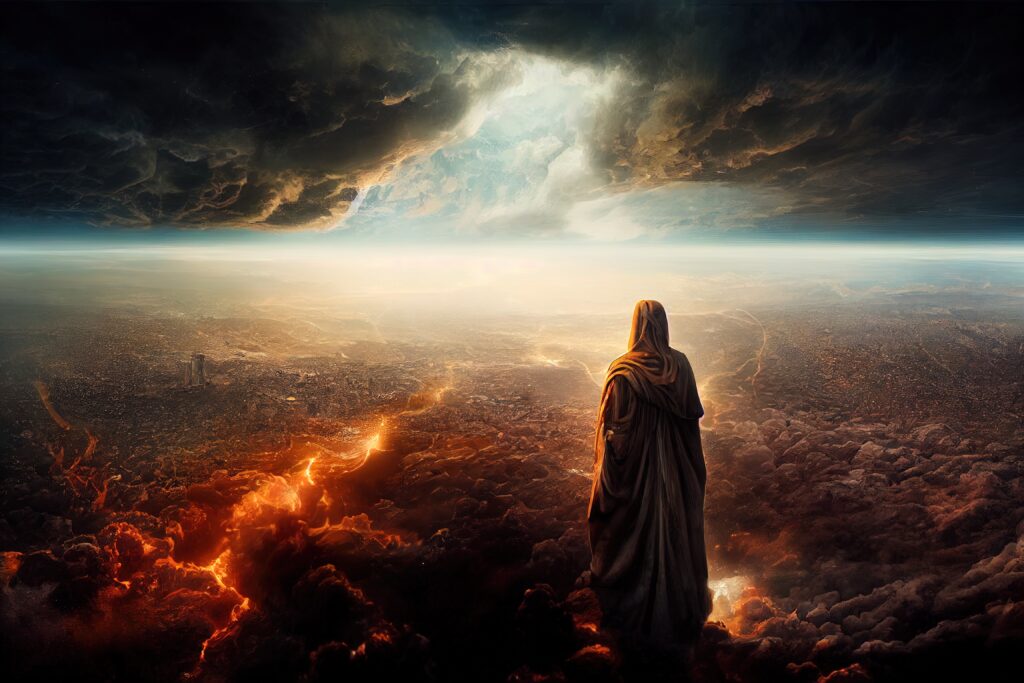
The Jewishness of the Christian Faith.
“It said, “Write in a book everything you see, and send it to the seven churches in the cities of Ephesus, Smyrna, Pergamum, Thyatira, Sardis, Philadelphia, and Laodicea.” When I turned to see who was speaking to me, I saw seven gold lampstands.” Revelation 1:11-12 NLT.
The seven churches are the first of a series of seven-fold visions in the Book of Revelation; seven churches, seven seals, seven trumpets, and seven plagues. Each of these seven-fold visions is preceded by an introductory scene from the Hebrew sanctuary. For example, the vision of the seven letters (Revelation 2 and 3) is preceded by a vision of Christ among the seven lampstands (Rev 1:12-20). The introductory scenes are like stage backdrops in front of which the actions of each vision take place. As a result, John Bowman (in The Interpreter’s Dictionary of the Bible) persuasively sets out the thesis that Revelation is modelled on the form of an ancient Greek play, with seven acts and seven scenes, played out against the backdrop of each vision’s introduction.
In the Book of Revelation, then, God has used the familiar form of the first-century drama to communicate a message about what is real in the universe. While actors speak of things that are not as if they were true, drama can be a powerful vehicle to express truth. We are actors in the drama of the ages.
The role of the Christian in a secular world is challenging. We must always act with the mission in mind, yet be accessible to those in need. Who is skilful enough to meet the challenge? No one, but with God all things are possible. He chose a murderer with a speech impediment to lead his people out of Egypt (Moses). He chose the runt of the litter to slay the giant (David). He was born in a manger, yet changed the world! He calls the unlikely to do what seems impossible. He doesn’t call the equipped; He equips the ones He calls.
Throughout the ancient Roman world, the seven-branched menorah (lampstand) was the most common symbol for Judaism, just as the fish and the cross later became symbols for Christian faith. In a striking way, the Book of Revelation adopts this Hebrew symbol to represent the churches of Asia Minor. By this means John clearly understood that the true Christian faith was the heir to Israel’s heritage. It was those who excluded Christians from the synagogue that had lost touch with their Jewish heritage, not the faithful followers of the Messia
First-century Christians proclaimed a Jewish Messiah, who fulfilled the ancient promises made to Israel.
They converted pagans to Israel’s one true God. While not requiring Gentiles to be circumcised, Jewish Christians like Paul embraced them as new participants in their Jewish faith in Jesus. Gentile believers were the spiritual children of Abraham (Gal 3:28), inwardly circumcised (Rom 2:28-29) and grafted into Israel’s tree while unbelieving branches were broken off (Rom 11:17).
In the Book of Revelation, the lampstand image stresses the Jewishness of the Christian faith and the intimate connection between that faith and the ancient heritage of Israel.
Jewish leaders of Jesus’ day failed to recognise Him because they had built up a scenario that the Messiah was supposed to fit. Jesus didn’t fit their expectations and so despite all the evidence, they crucified Him!
There is a clear warning here for us if we allow our theology to over-ride clear passages of Scripture. This is happening in areas of the Christian church where some theology still has literal Israel as God’s chosen people despite the clear evidence to the contrary that Christianity has replaced literal Israel as SPIRITUAL Israel, as His chosen people, and as Abraham’s seed and heirs to the promise. (see e.g. Gal 3:28-29)
